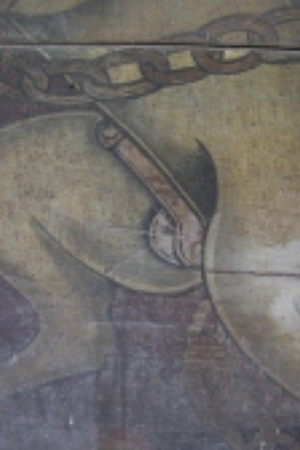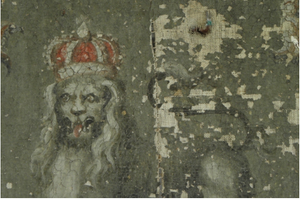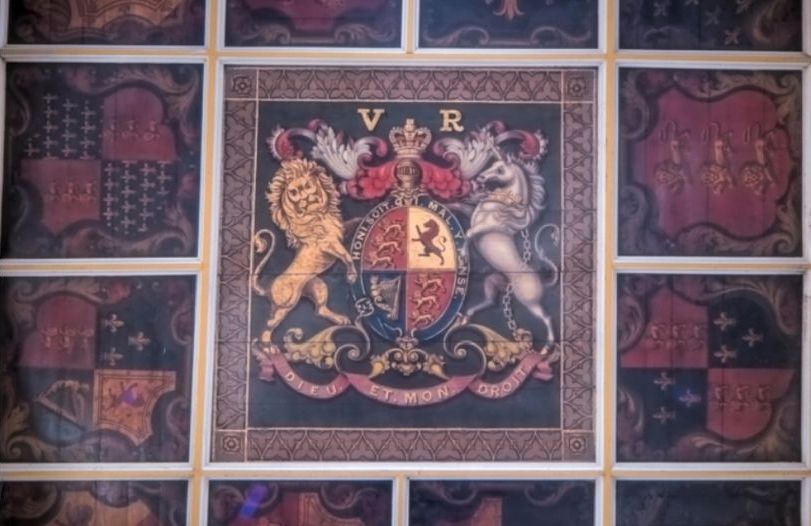Safeguard and Stabilise
Saving Royal Arms from Destruction
Saving Royal Arms and Paintings From Destruction
Paintings are easily damaged and destroyed. The majority of remaining Royal Arms are Georgian and Victorian - the comparative rarity of pre-Restoration painted Royal Arms in churches suggests that many have been discarded or lost.

Why Were They Destroyed?
Royal Arms have been removed from our churches as a result of changes in politics, fashion or the condition and appearance of the paintings themselves. They have the potential to become obsolete with every change to the Royal Arms, and sometime with a change of monarch if the Arms have been personalised.
However, changes in monarch or fashion have sometimes saved Royal Arms from destruction. Once they have been moved to more obscure corners, such as vestries and ringing chambers, they have often remained undisturbed and undamaged for many years: benign neglect ensuring their survival.
Painted Royal Arms can also be the agents of their own destruction. They have not always been made from the highest quality materials and this can contribute to their deterioration.
Their connection with a particularly unpopular monarch or regime, or the ruling elite in general, has led to them becoming victims of vandalism, destruction or obliteration. Even the lion and unicorn’s often carefully defined genitals can be targets for attack.
As well as disappearing through deliberate damage and disposal, Royal Arms are vulnerable to accidental damage. Leaking roofs, falling from the wall or even coming into contact with churchwardens’ staves can lead to partial or even total loss.

The internal environment typical of many parish churches is also unkind to canvas, wood and paint and many Arms have simply been allowed to deteriorate until they have been regarded as beyond conservation.
Where legibility is of key importance, darkened varnish, patchy mould growth, splashes of bat urine, splits, tears and losses can interrupt the Arms’ imagery so that they are neither decorative nor informative. At this point, in the past, they have often been judged as no longer fit to be seen.

